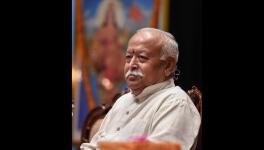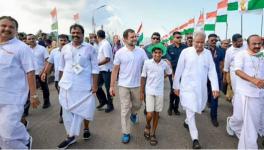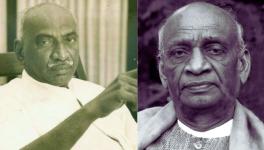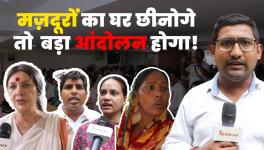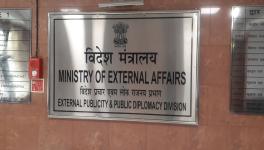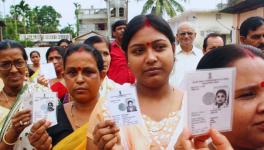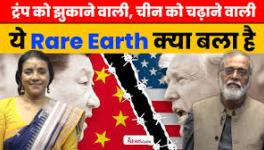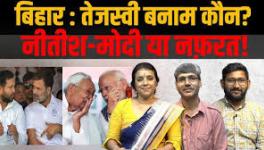Modi Visits RSS HQ: Sangham Sharnam Gacchami?

The recent visit of Prime Minister Narendra Modi to the Rashtriya Swayamsevak Sangh (RSS) headquarters in Nagpur and pay homage to RSS founder K.B. Hedgewar and its second sarsanghchalak, Madhav Sadashiv Golwalkar, elicited great interest all around.
The much-advertised trip of the Prime Minister was interpreted by many as a mechanism to strengthen his stature within the RSS combine. The other anticipation was that as this September, Modi will be completing 75 years, as per the norms set by the Bharatiya Janata Party (BJP), he should retire.
There are a couple of other issues due to which it appeared as if the father (RSS)-son (BJP) relations had turned sour. In the wake of 2024 general elections, BJP president J.P. Nadda had stated that now BJP could be totally on its own, so it did not need support from RSS. Earlier, when BJP was less capable, it did need RSS support for electoral mobilisation.
The second issue was the arrogance shown by Modi when he announced that he is “non-biological”, directly sent by God for the work on this land. This was perceived by RSS chief Mohan Bhagwat as a sign of Modi’s “inflated ego”. Bhagwat said some people start believing they are superior (Devs) and then they declare themselves as Gods.
The Lok Sabha elections saw a decline in the strength of BJP. There is a feeling that RSS did not involve itself with full force in the 2024 Lok Sabha elections. It quickly jumped back for the Maharashtra and Haryana Assembly elections. As far as RSS is concerned, barring 1984, when it saw the Khalistani movement as a threat to Indian unity, it has always stood by BJP and ensured its rise in electoral power.
It is RSS which is the core planner. Its multiple organisations, coordinated by its Rashtriya Pratinidhi Sabha (National Representatives Committee) ensure that though they will be pursuing the agenda of their own, they will also spread the RSS ideology to glorify the values of the past (Manusmiriti) among different sections of society. These organisations also spread hatred against Muslims and Christians as they belong to religions of “foreign origin”. At the same time, during elections, they all put in their might to ensure BJP’s victory.
The formation of Bharatiya Jansangh (BJS), with the help of Syama Prasad Mukherjee of Hindu Mahasabha, and then the gradual takeover of BJS by RSS after the demise of Mukherjee, the RSS had a full-fledged political organisation under its belt. The division of labour between RSS, BJP and other progeny of RSS is very clear.
The best example of this was seen in the 1980s when Vishwa Hindu Parishad or VHP began the Ram Temple movement and then BJP took it over to make a national political agenda reaping a rich harvest. The issues raised by RSS are related to past glories and falsified history to promote itself and create misconceptions against the religious minorities and weaker sections of society, particularly Dalits, adivasis and women. Its strength lies in its strong reach in the community through its shakhas (branches) and other communitarian programmes.
Though Indian society made a political transition from feudal to colonial to democratic, the RSS cleverly propagated the principles of caste and gender hierarchy of the times of kingdoms and feudal society through its shakhas. This was supplemented by various other measures, including Ekal Vidylalyas, Vanvasi Kalyan Ashram, Seva Bharati, and Rashtra Sevika Samiti, to name a few.
Though RSS infiltration into various portals of civic society and political structure of the society has been an ongoing process, with BJP coming to power in the states and then in Centre, this has been magnified.
Now to add up to shakhas, it is planning community groups for women, children and old people to keep them under their ideological grip. Recently, they organised a picnic in my area. One Muslim woman wanted to join the same; she was bluntly told that she would become uncomfortable by the type of talk and programmes during the picnic. Women going to Rashtra Sevika Samiti’s morning shakhas become apparent as you see them walking with the lathi (baton).
During the past decade, the BJP’s rule has implemented the RSS’s Hindu nationalist agenda of Ram Temple, abolition of Article 370, triple talaq, and National Register of Citizens or NRC. (The Waqf (Amendment) Bill has recently been passed in the Lok Sabha). At a deeper level, there is no question of discord between RSS and BJP. At the most, there may be some differences at the strategy level on achieving their united goal of a Hindu Nation.
At the RSS headquarters in Nagpur, Modi paid tribute to Hedgewar and Golwalkar for the path they had shown. What is this path? One is to keep aloof from values of the Indian nationalist movement striving for inclusive nationalism with the values of ‘Liberty’ Equality and Fraternity’.
Two, while they try to disown the Golwalkar’s ‘Threats to Hindu National Muslims, Christians and Communists’, in practice, their policies follow this to the last dot. The blatant example of this is the recent Eid celebration this year (2025). To begin with one state has shifted it from being a ‘Gazetted Holiday’ to ‘Optional Holiday’, offering namaz on roads is being opposed and namazis were attacked by the police in some places. One was also barred from offering namaz on the terrace of one’s house in Uttar Pradesh. So, what Golwalkar said has been actualised in the last decade of Modi rule.
As far Christians are concerned, there are reports that in Odisha now (there is a BJP government there for the first time) the community cannot bury their dead easily. In Balasore district “threats of village boycott for Adivasi Christians by tribal outfit known as Sarna Majhi with misleading claims that Adivasi Christian has no burial right in their village as per Art 13(3) A of Indian Constitution.” (From the fact-finding report in Balasore).
Prime Minister Modi repeatedly says that India is becoming viksit (developed) on inspiration from RSS’s ideology. As such, if we see the international indices of happiness, religious freedom, press freedom, democracy and hunger, India is witnessing a drastic fall in rankings.
The ‘vikas’, it seems for Modi and his ideology, is the plundering of wealth by the few favourites, who flout most of the laws to flourish here or leave this country with large booty plundered from banks etc.
So, what is the similarity between words and deeds? Modi’s recent Nagpur trip had clear-cut political goals and his utterances were more of a show, for the consumption for electoral purposes.
The writer is a human rights activist, who taught at IIT Bombay. The views are personal.
Get the latest reports & analysis with people's perspective on Protests, movements & deep analytical videos, discussions of the current affairs in your Telegram app. Subscribe to NewsClick's Telegram channel & get Real-Time updates on stories, as they get published on our website.










